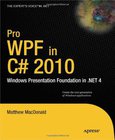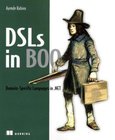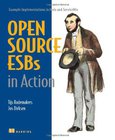Negotiation in Decentralization
Case Study of China's Carbon Trading in the Power Sector
Book Description:
The Chinese government set a target to reduce Chinas carbon intensity by 40%-45% in 2020 at its 2005 level. To achieve this target, the government has allocated targets to provinces, cities, and large enterprises, and selected five pilot provinces and eight cities for CO2 emission trading. Such emission trading process will involve decentralization, optimization, and negotiation. The prime objective of this book is to perform academic research on simulating the negotiation process. Through this research, a methodological framework and its implementation are set up to analyze, model and facilitate the process of negotiation among central government and individual energy producers under environmental, economical and social constraints. Negotiation In Decentralization: Case Study Of China's Carbon Trading In The Power Sector discusses research carried out on negotiation issues in China regarding Chinese power sector reform over the past 30 years. Results show that conflicts exist between power groups and the national government, and that the most current negotiation topics in China's power industry are demand and supply management, capital investment, energy prices, and CO2 emission mitigations. Negotiation In Decentralization: Case Study Of China's Carbon Trading In The Power Sector is written for government policy makers, energy and environment industry investors, energy program and project managers, environment conservation specialists, university professors, researchers, and graduate students. It aims to provide a methodology and a tool that can resolve difficult negotiation issues and change a loss-loss situation to a win-win situation for key players in a decentralized system, including government policymakers, energy producers, and environment conservationists.
Download Link:
Related Books:
Pro WPF in C# 2010
Windows Presentation Foundation in .NET 4
Microsoft's Windows Presentation Foundation (WPF) provides the foundation for building applications and high-quality user experiences for the Windows operating system. It blends the application user interface, documents, and media content, while exploiting the full power of your computer's operating system. Its functionality extends to the support for tablet PCs and other forms of input device, and it provides a more modern imaging and printing pipeline, accessibility and UI automation infrastructure, data-driven user interfaces and visualization, and integration points for weaving the application experience into the Windows shell. This book shows you how WPF really works. It provides you with the no-nonsense, practical advice that you need in order...
DSLs in Boo
Domain Specific Languages in .NET
A general-purpose language like C# is designed to handle all programming tasks. By contrast, the structure and syntax of a Domain-Specific Language are designed to match a particular applications area. A DSL is designed for readability and easy programming of repeating problems. Using the innovative Boo language, it's a breeze to create a DSL for your application domain that works on .NET and does not sacrifice performance.DSLs in Boo shows you how to design, extend, and evolve DSLs for .NET by focusing on approaches and patterns. You learn to define an app in terms that match the domain, and to use Boo to build DSLs that generate efficient executables. And you won't deal with the awkward XML-laden syntax many DSLs require. The book concentrates on w...
Open-Source ESBs in Action
Example Implementations in Mule and ServiceMix
Most modern business systems include independent applications that exchange information with each other-a technique usually called enterprise integration. An architectural approach called the Enterprise Service Bus (ESB) offers developers a way to handle the messages between those independent applications without creating a lot of custom code. While commercial ESB solutions can be quite expensive to implement and maintain, a set of high-quality open source ESB tools offer the same functionality at a substantially lower cost. Open Source ESBs in Action shows you how to implement and use two open source ESB implementations: Mule and ServiceMix. The authors introduce you to these freely-available ESB tools and present practical examples of how to use th...
2007 - 2021 © eBooks-IT.org




